Do the Shetland Islands need a tunnel vision?
 Estunlar.fo
Estunlar.foIn Shetland you're never more than three miles from the sea, and the ferries which connect the islands are a regular feature in people's lives. But as the fleet ages, Shetlanders are increasingly looking to the Faroe Islands, which has created a network of tunnels to keep people connected, for inspiration.
Debbie Jamieson admits that she would love to live on her home island of Yell, which lies north of the Shetland mainland.
But her job as an NHS nurse means she has to be on call - and the ferry timetables make that impractical.
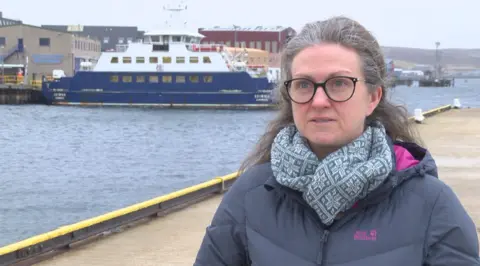
"Lots of my family are there," said Debbie.
"But I knew for my career I had to live on the mainland. Lots of my friends and family have had that choice removed; they've had to live on the mainland for work."
Shetland is an archipelago containing about 100 islands - 16 of which are inhabited. They include Yell, the second most northerly occupied island in the UK.
It is connected to the Shetland mainland by a three-mile ferry journey which usually takes about 20 minutes, but the ferries can be halted by severe weather or breakdowns.
The island has previously been earmarked for a tunnel, but projects have never moved beyond the proposal stages because of the cost.
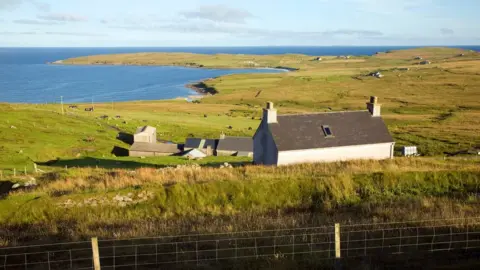 Getty Images
Getty ImagesThe ferries have become less reliable as they age, leading to "more and more regular" breakdowns, according to Councillor Ryan Thomson.
He argues that now is the time to bring the issue of fixed links between the islands, such as tunnels, up the agenda.
Another driver is the proposal to build a space launch facility on Unst, Scotland's most northerly inhabited island. Those behind the plans believe it could create 350 jobs across Shetland.
At present, the journey from Unst to Lerwick on the mainland would involve two ferries and a 45-minute drive.
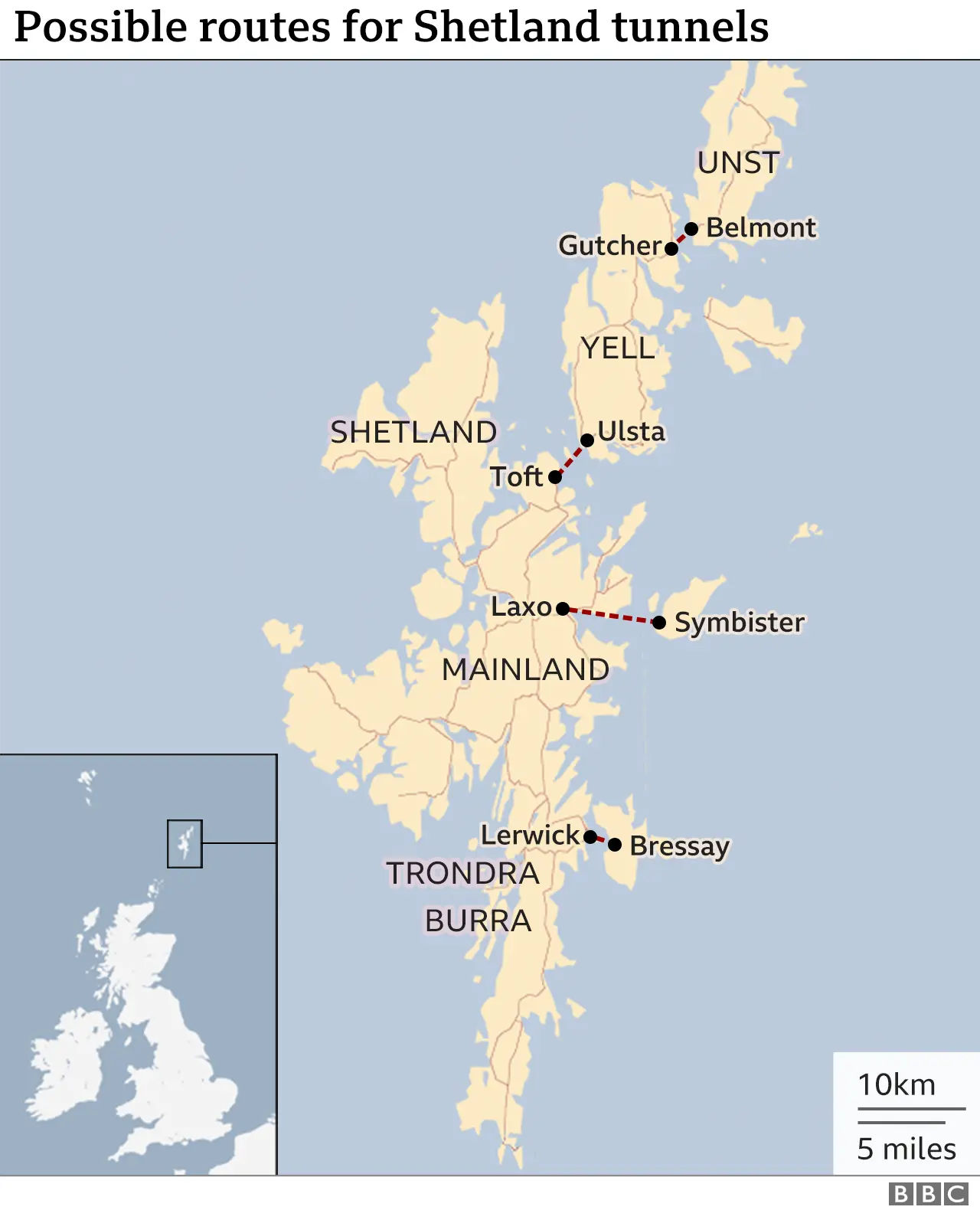
"That project would benefit massively from fixed links," says Mr Thomson.
"You'll see massive infrastructure investment there and a population increase. You might then see a situation where ferries struggle to cope."
The fleet is also one of Shetland Islands Council's biggest polluters. The vessels run on diesel and are responsible for half of the council's output of CO2.
The Faroe Islands, which lie to the north west of Shetland, already have extensive experience in joining up their communities.
This autonomous region of Denmark is made up of a series of 18 islets in the North Atlantic, half way between Iceland and Norway. There are 21 tunnels in the islands, three of which are subsea - similar to what would be required in Shetland.
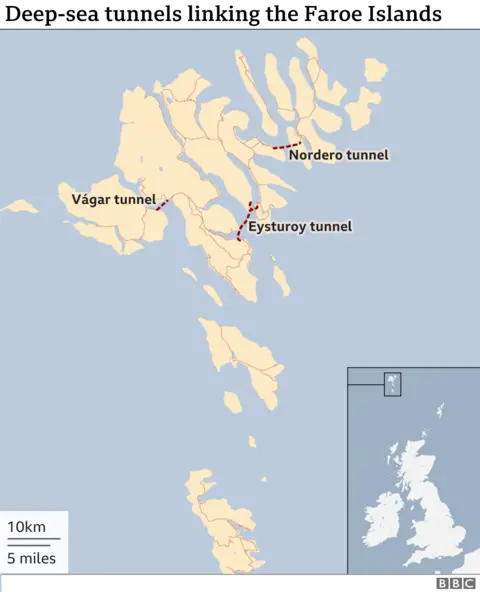
"Almost 95% of the Faroese population is connected by roads and tunnels," says Sveinur Tróndarson, editor of Faroese newspaper Dimmalaetting.
He says there has been a dramatic impact since a subsea tunnel replaced the ferry to the island of Vágar 20 years ago.
"The ferry was very small - you had to wait four, five hours to cross," he says.
"Now you can live on the island of Vágar and work practically anywhere in the Faroe Islands - the job market opens up.
"It opens up the other way as well. In Toftir, the village at the other end of the Eysturoy tunnel, they have seen a rise in the number of inhabitants that they haven't seen since the beginning of time."
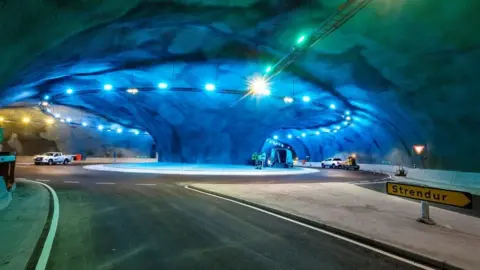 ESTUNLAR.FO
ESTUNLAR.FOThe 11km Eysturoy tunnel is the most recent to have been completed, at a cost of €134m.
Shetland does have experience of creating fixed links between islands.
Bridges were built to Trondra and Burra in 1971, sparking a demand for housing on the islands. Trondra's population jumped from 17 to 88 in the following decade, while Burra's rose from 565 to 850.
Those populations have remained consistent over the last 40 years, bringing families to an area that had previously been hit hard by a decline in the fishing industry.
However, the idea of connecting Shetland by tunnels does not sit well with everyone.
For some, the fact that transport links are subject to the weather or performance of ferries is just part of the island experience.
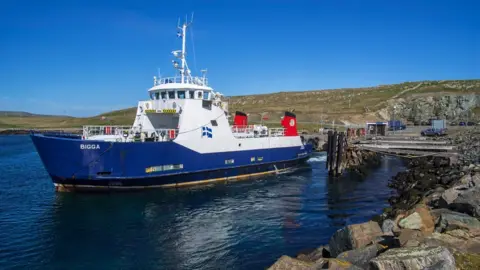 Getty Images
Getty ImagesAnd as the biggest employer in Shetland, what would the council do with ferry staff if fixed links became a reality?
"There will still always be a need for ferry crews on the outer islands," says Mr Thomson, who represents the north isles.
"I think you'd be looking at far more job opportunities if the islands were connected to the (Shetland) mainland."
But digging a tunnel and laying a road does not come cheap. When Shetland Islands Council investigated the construction of a 1.2km tunnel between Bressay and the mainland in 2016, one of the lowest estimates put the cost at £17m.
The Faroe Islands have funded their deep sea tunnels with loans. For Shetland, political co-operation could be key.
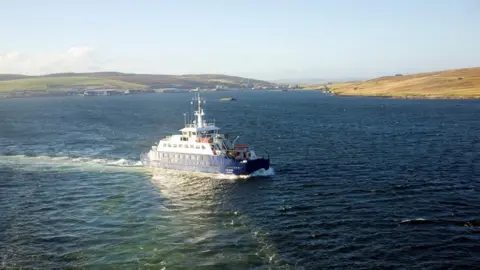 Getty Images
Getty Images"There's no way we can fund something as substantial as this - the risk of something going wrong could be catastrophic for Shetland Islands Council," says Mr Thomson.
"We would need assistance from the Scottish government."
The council is seeking a meeting with Paul Wheelhouse, the minister for energy, connectivity and the islands, to discuss the issue.
"We have to work together to make sure a mutually-beneficial and long-term conclusion is found," Mr Thomson.
National agency Transport Scotland has previously helped fund a study into transport in Shetland, but said fixed links had been rejected as they were significantly more expensive than the cost for continuing the ferry services.
While councils are responsible for funding any replacement infrastructure, the Scottish government said ministers were committed to "continuing engagement" on the issue.
